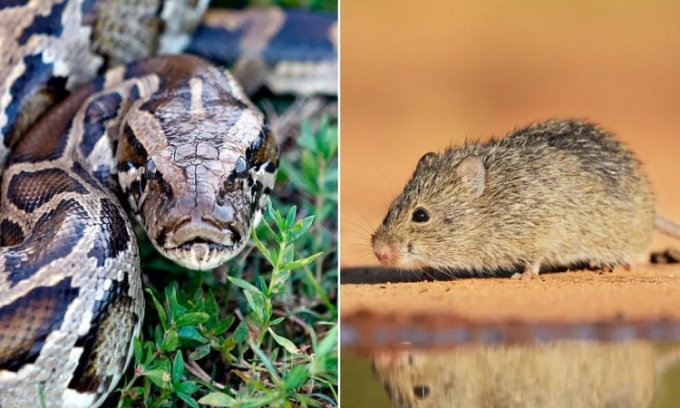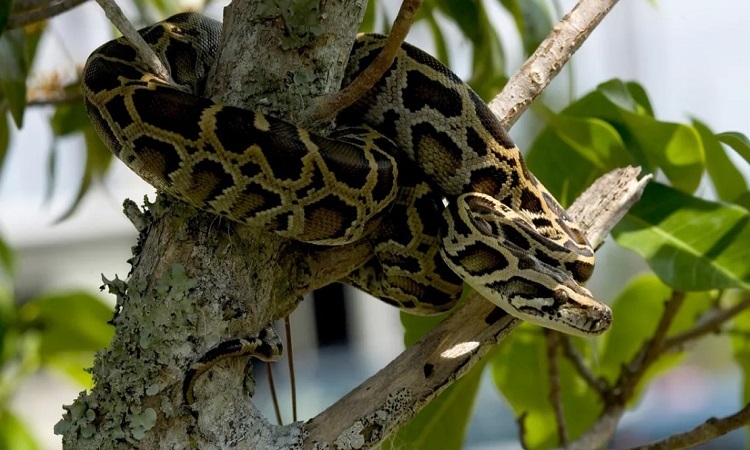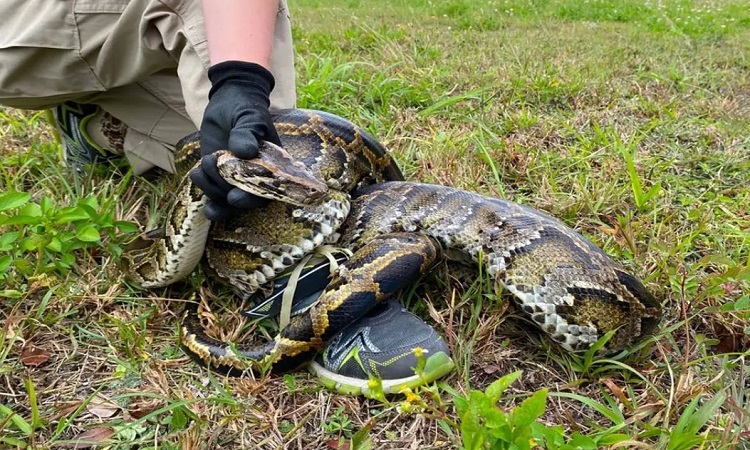Invasive Burmese pythons kill many of the rats' natural predators, allowing them to multiply and invade the Everglades.

Burmese python and cotton rat. Photo: Rhona Wise/Danita Delimont
Burmese pythons are helping rats dominate parts of the Florida Everglades by wiping out many of their traditional predators, according to a study published in the journal Mammalogy. The surge in rats could disrupt an already fragile ecosystem and increase the risk of disease transmission to humans, Live Science reported on June 5.
The Burmese python ( Python bivittatus ) was discovered in Everglades National Park in 1979. Its population skyrocketed in the 1980s and 1990s. Today, there are tens of thousands of pythons living in the Everglades. Over the past 40 years, they have decimated many native animal populations, including bobcats, rabbits, and foxes.
However, small mammals did not appear to be affected by the presence of Burmese pythons, including cotton rats ( Sigmodon hispidus ). To investigate the impact of Burmese pythons on these species, the researchers caught 115 rats and fitted them with transmitters, 34 in areas with few pythons and 81 in areas with many pythons. They monitored the rats every two days and videotaped the predators when any rats died. In cases where a rat was likely swallowed, the team analyzed rat DNA in the feces and regurgitated remains.
The team’s findings showed similar mortality rates in both areas. Although the pythons killed six tagged cotton rats, they did not significantly impact the overall rat population. But because pythons have a significant impact on large mammal populations such as bobcats and foxes, they create an ecological niche for rats to invade. As a result, cotton rats are taking over communities in areas where pythons are abundant, according to study author Robert A McCleery, an associate professor of wildlife ecology and conservation at the University of Florida.
The collapse of large and medium-sized mammal populations in the Everglades affects important ecological processes such as nutrient cycling and scavenging. Rats cannot replace the roles of missing mammals. Their dominance also has the potential to spread disease to humans. Cotton rats are reservoirs of viruses that can infect humans, such as Everglades virus (EVEV) and hantavirus.
An Khang (According to Live Science )
Source link





![[Photo] Bustling construction at key national traffic construction sites](https://vstatic.vietnam.vn/vietnam/resource/IMAGE/2025/5/2/a99d56a8d6774aeab19bfccd372dc3e9)






















![[Photo] "Lovely" moments on the 30/4 holiday](https://vstatic.vietnam.vn/vietnam/resource/IMAGE/2025/5/1/26d5d698f36b498287397db9e2f9d16c)
![[Photo] Binh Thuan organizes many special festivals on the occasion of April 30 and May 1](https://vstatic.vietnam.vn/vietnam/resource/IMAGE/2025/5/1/5180af1d979642468ef6a3a9755d8d51)


































































Comment (0)